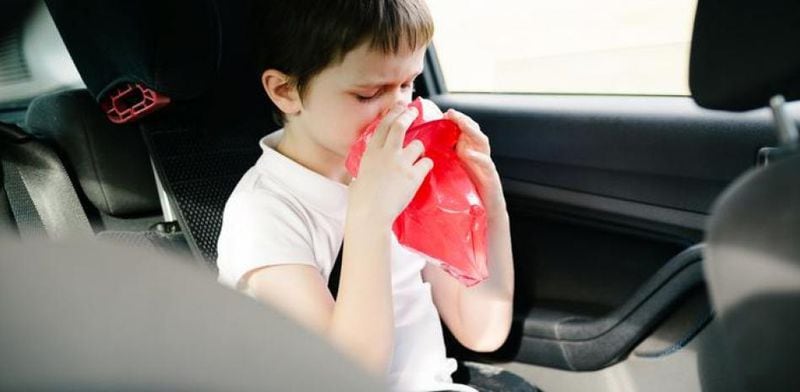Motion sickness, the feeling of motion sickness, is the cause of this discomfort, which can occur much more frequently when sitting in the rear seats.
How many times have you been in a car, especially sitting in the back seats, and suddenly you feel like you are starting to break out in a cold sweat, you turn pale and a little dizziness appears, which begins to develop in an unusual way. ?
The truth is that we imagine several, since it is something quite common among those who are on board a vehicle. But, Why does this usually happen to us when we are sitting in the back seats and not when we are co-pilot?
This phenomenon is called motion sickness and corresponds to the feeling of motion sickness. This is because when we travel in a vehicle, we perceive that we are moving and this is thanks to the balance system which gives us spatial orientation. and how we locate our position in the space around us to distinguish, for example, where is up and where is down, or to be able to stand without falling, or sit without collapsing.

Balance is achieved through the interaction of five parts of the nervous system:
1. The inner ear : that which controls the directions of movement such as turns, rolls, pitches, transverse and longitudinal oscillations.
2. The eyes : they receive information about our position and our movements.
3. Pressure receptors in the joints of the legs and spine: which provide information on the position of the body.
4. Sensory receptors in muscles and joints: which indicate which parts of the body are moving.
5. The central nervous system: formed by the brain and spinal cord.
As long as this is all good and connected, we will be in position with no problem. However, when we are in the car, there is information that comes into conflict.
It is common that when we read or watch a movie inside the vehicle, the proprioceptive system tells us that we are sitting still, while the vestibular system tells us to move and the visual system focuses on one point. To my credit, therefore, conflicting information is coming.
“Dizziness is a feeling of imbalance, sometimes associated with a feeling of weakness, fatigue and loss of stability, accompanied by nausea, paleness, headache and, in some cases, vomiting. In this case, there is a disagreement between the sensation of movements and the visual perception of them, which causes a lack of control over their body”, explains Dr. Paulina Maira, child neurologist at the Cordillera Clinic, who adds that “The same thing happens when we look out the window and see objects passing by at high speed, because, because they appear blurry, the brain is unable to interpret this information. It also contributes to making us dizzy.
All this happens more frequently in the rear seats, because after the age of 12 and when we already have the possibility of traveling in the passenger seat, a new world opens up to us and we have a much greater field of vision wide and we can observe the distant horizon moving slowly through the windshield. This sweet spot resolves the conflict between the visual and vestibular systems because the brain receives similar information about the direction and speed of movements from the ears and eyes.

This is the reason why, in general, we do not feel more dizzy on the back benches than on those in front. And the one who drives benefits from other privileges, since his senses are completely connected and he knows very well the maneuver he is going to carry out, anticipating the action of the brain and the entire nervous system, thus avoiding conflicts information.
Symptoms that may be associated with motion sickness include loss of orientation and balance, cold sweats, paleness, yawning, salivation, nausea and vomiting. Yawning is due to the body’s need for oxygen, while nausea and vomiting are linked to the location of the nerve center that causes these reactions.
It is obviously children who are the most prone to this dizziness, because they do not have enough maturity in their systems to be able to cope with this exchange of information, They also don’t have the experience to be able to overcome it before the discomfort begins. However, dizziness in the car is not reserved for adults, especially those who are more prone to it.
Source: Latercera
I’m Rose Brown , a journalist and writer with over 10 years of experience in the news industry. I specialize in covering tennis-related news for Athletistic, a leading sports media website. My writing is highly regarded for its quick turnaround and accuracy, as well as my ability to tell compelling stories about the sport.


